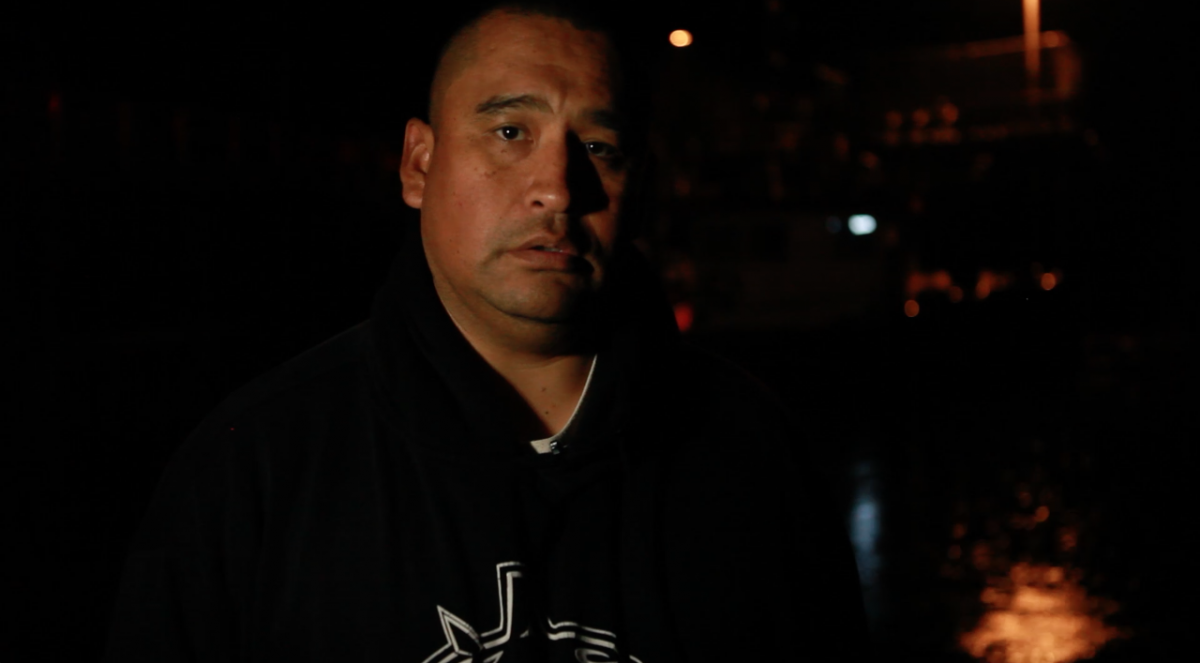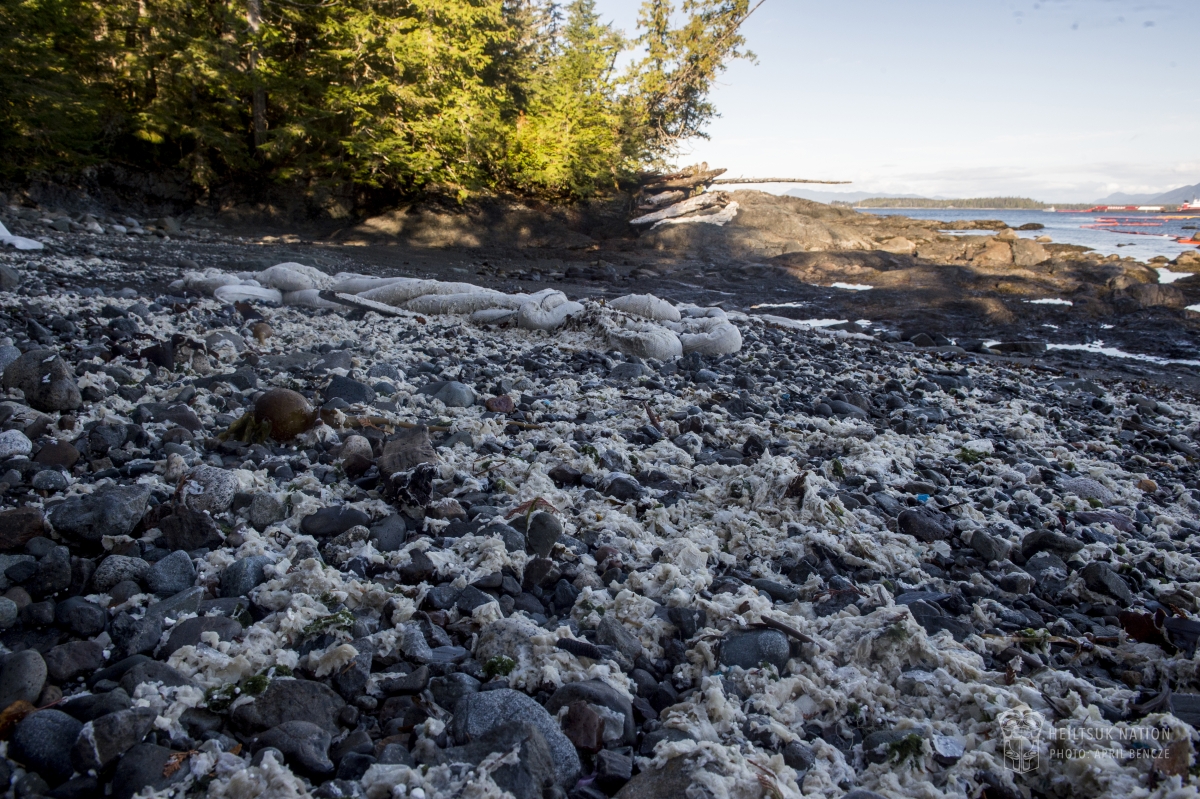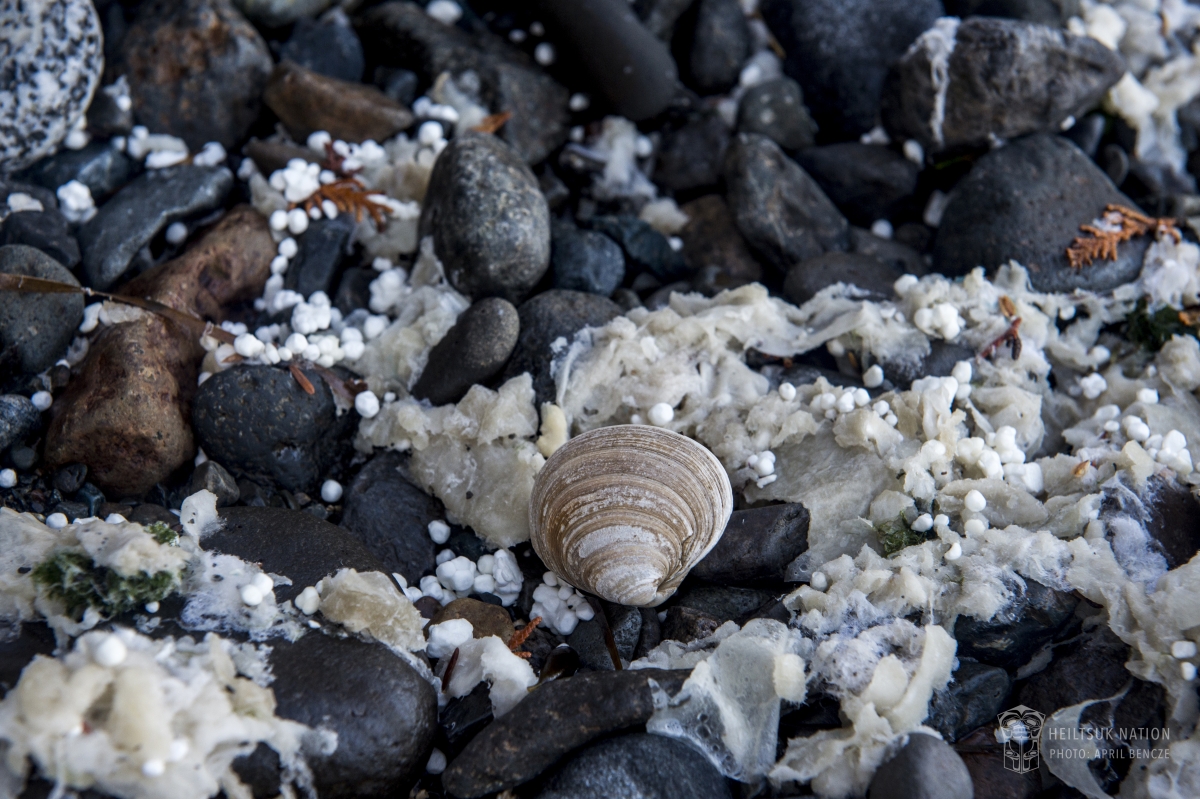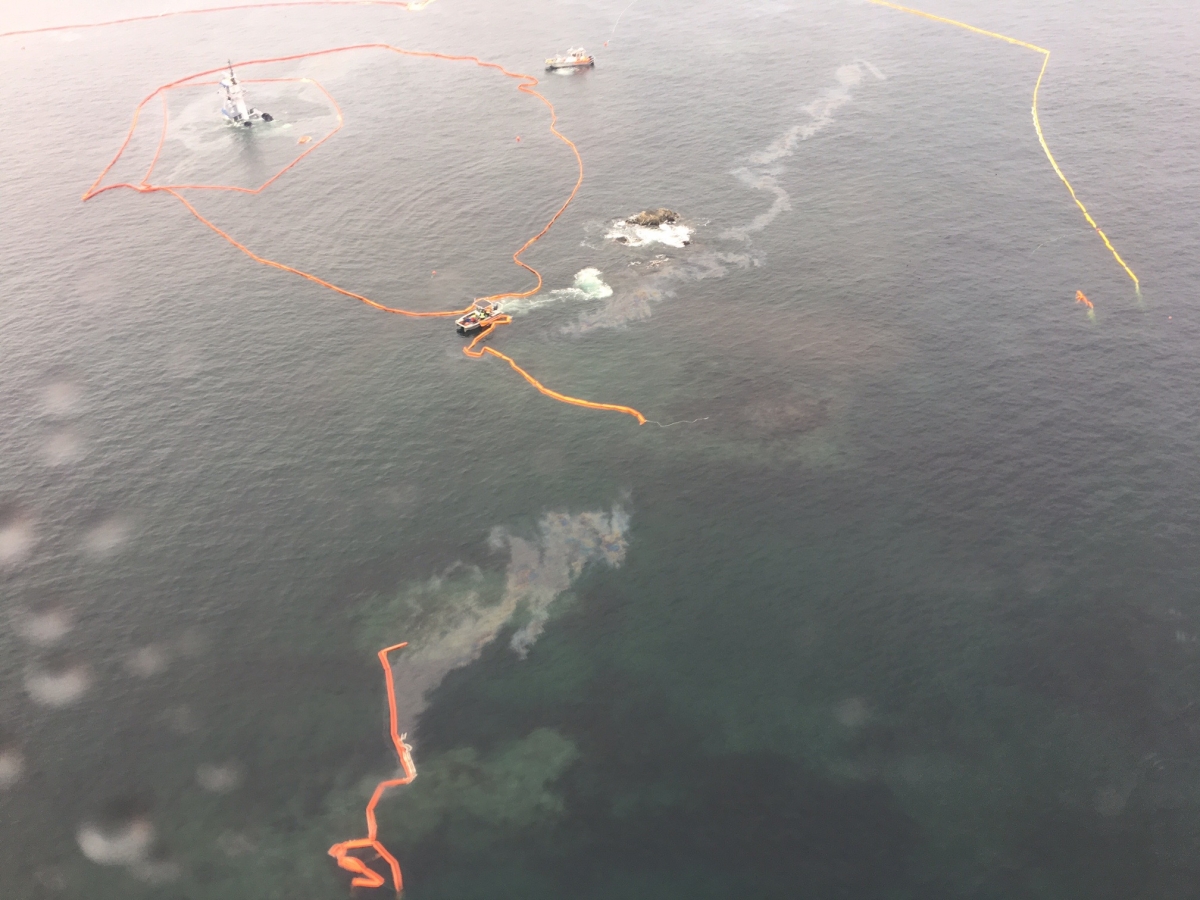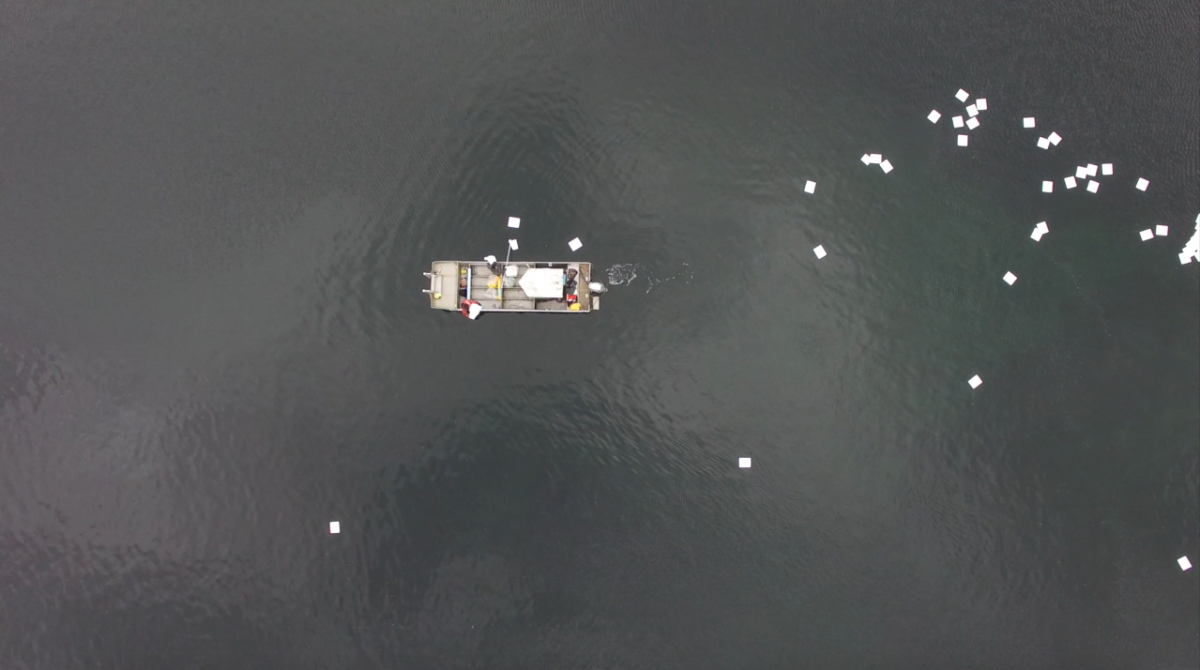It has been two weeks since the Nathan E. Stewart, a U.S.-based fuel barge tug, struck ground and sank near Bella Bella, B.C., contaminating the harvest waters of the Heiltsuk First Nation with an estimated 60,000 gallons of diesel fuel.
During that time coastal residents have watched with dismay as spill response efforts have been hampered repeatedly by unfavourable weather, failed spill containment and even one incident where a spill response ship took on water and itself began to sink.
But the ongoing failure to contain and clean up the spill has been witnessed most closely by members of the Heiltsuk First Nation, who have been on the frontlines of the spill response effort since day one.
Jess Housty, member of the Heiltsuk tribal council, told DeSmog Canada the spill has put much of her community’s regular life on hold, thrusting many individuals into the unfamiliar territory of disaster response.
“That’s been one of the great challenges for us — as a nation we have no particular capacity and expertise around spill response,” Housty said, saying that hasn’t stopped members of her community from stepping in to help response teams from the Canadian Coast Guard and the Western Canadian Marine Response Corporation.
Housty said community members are working on every aspect of spill response from wildlife monitoring to ecological sampling to maintaining and preparing oil spill booms.
The Nation is currently crowdfunding for support to hire experts to continue sampling and monitor environmental and human health impacts of the spill.
“We’re working in a kind of incident command system that makes objective sense but is certainly not a system that reflects our values and the way we would operate and govern a process like this,” Housty said.
“There’s a lot we don’t know. We’re not engineers or spill response technicians.”
“We’re fishermen, we’re harvesters, we’re mariners, we’re people who love the place we come from.”
Heiltsuk crews gather absorbent materials. “We haven’t known how long this process will carry on. I still don’t know how long it will carry on,” Jess Housty said. Photo: Heiltsuk Nation
Diesel sheen seen on the beach of Athlone Island on October 23. Photo: Heiltsuk Nation
The Nathan E. Stewart, owned by Texas-based Kirby Corporation, sits grounded near Gale Pass. Photo: April Bencze
Poor weather conditions have prevented containment booms, shown here stopping the spread of contaminants from the tug, from staying in place. Photo: Tavish Campbell and April Bencze
“Ninety per cent of our resources come from that area,” Russell Windsor said. Photo: Heiltsuk Nation
On October 24, day twelve of the spill, containment booms broke apart on the beach. Photo: April Bencze
“One of the frustrating thing is some of the containment booms broke apart and you end up with what looks like soggy toilet paper all along the beach,” Jess Housty told DeSmog Canada. Photo: Heiltsuk Nation
It is difficult to measure the effectiveness of containment booms and absorbent materials, Housty said. Photo: Heiltsuk Nation
“We have no great sense of what is still in open water,” Housty said when asked about diesel recovery rates.
“I can tell you how many garbage bags of sorbent pads have been hauled out of the water, but that doesn’t really give you any idea of how soiled they were and how much diesel they’ve picked up.”
She added, “My reports that I’ve been getting every day is they’re not particularly effective unless the diesel is concentrated enough for it to pick up.”
“It’s really hard to put a number to how much.”
Diesel sheen on the beach of Athlone Island. Photo: April Bencze
Prints can be seen alongside tattered sorbent. Photo: April Bencze
Heiltsuk trapper and fisherman Fred Reid. “I had a trapline in the area…have trapped in that area for 14 years,” Reid said. Reid added the region is critical for salmon, cockles, abalone, urchins, five species of clams and otters. “We were already devastated this year, I guess the temperature of the water, the seaweed never came back. It just never grew.” Photo: Heiltsuk Nation
Heiltsuk crew continue to collect contaminated material October 25. Photo: Heiltsuk Nation
Diesel sheen can be seen spreading far beyond containment booms. Photo: Heiltsuk Nation
Diesel slick can be seen escaping a failed containment boom on October 22. Photo: Heiltsuk Nation
Poor weather has made it extremely difficult to keep containment materials in place. Photo: Heiltsuk Nation
Herring smelt seen around the sunken Nathan E. Stewart. The tug is still releasing fuel into surrounding waters. Photo: April Bencze
Herring are a species of traditional importance for the Heiltsuk First Nation.
“I think it’s really important for the wider world to understand this isn’t just an environmental issue; it’s not just an ecological disaster,” Housty said.
“It is that — don’t get me wrong. But what has been violated is not just the environment. It’s also about food security, it’s our certainty that we can maintain our trade relationship with our relatives in other communities.”
In Photos: Bella Bella Diesel Fuel Spill 2 Weeks In https://t.co/EXyl5NDHjr #NathanEStewart #bcpoli #cdnpoli @heiltsukvoice @HeiltsukCouncil
— DeSmog Canada (@DeSmogCanada) October 27, 2016
Housty said her community has lost its certainty that they can feast and conduct ceremony with traditional foods.
“And there is a huge ceremonial loss because the things we hold sacred have been violated by this. So for our community, this is not just about cleaning up an environmental disaster, 
“And to have that certainty taken away has introduced a grief into our community that is going to take a very long time to heal.”
The Nathan E. Stewart resting along the rugged reef, an area rich in biological diversity. Photo: Heiltsuk Nation
The crumpled base of the Nathan E. Stewart. Photo: Heiltsuk Nation
Rich marine life, such as these colourful anemones, surround the sunken tug. Photo: Tavish Campbell
Photographers survey the wreckage. Photo: Heiltsuk Nation
Sorbent pads on the waters of Gale Pass. Photo: Tavish Campbell and April Bencze.
“We have several different types of containment booms deployed and sorbent pads deployed as well to try to pick up some of the diesel sheen but as you may have been following we have had really difficult weather conditions,” Housty told DeSmog Canada.
“Four of the last five days we’ve had to stand down small vessels because it’s too challenging for us to operate out there.”
Gale Pass with a trailing line of sorbent pads. Photo: Tavish Campbell and April Bencze.
A transient orca passes by clean up crews on October 24. Photo: Heiltsuk Nation.
Subscribe to our newsletter
Stay up to date with DeSmog news and alerts







